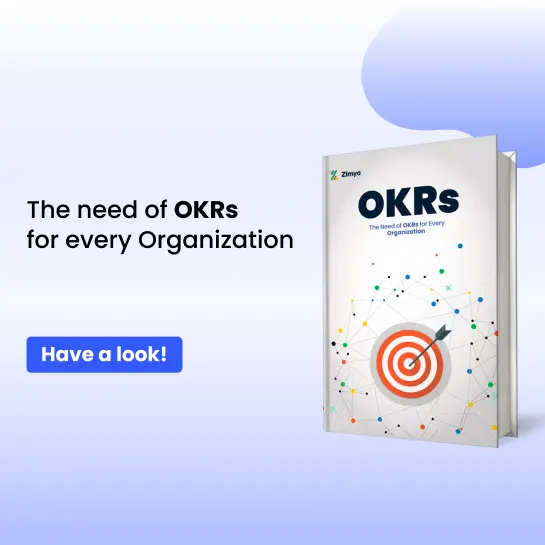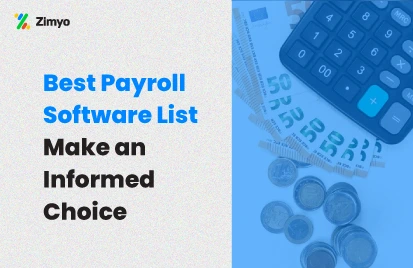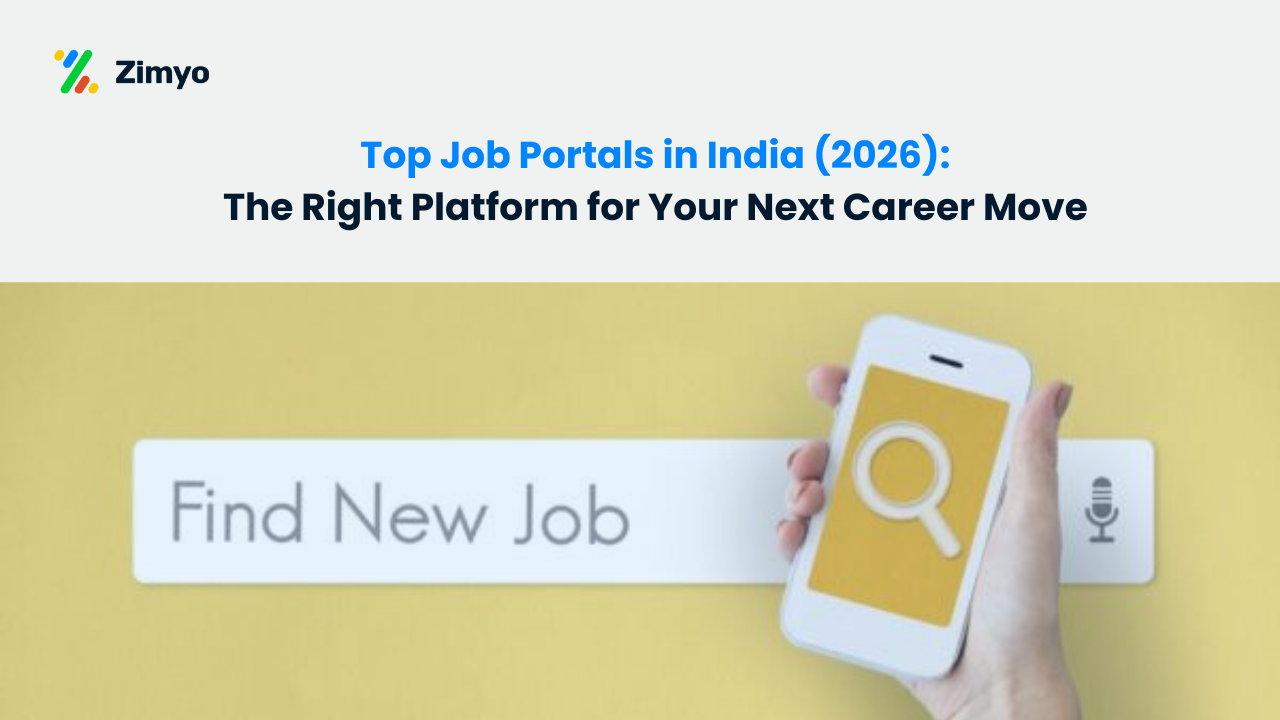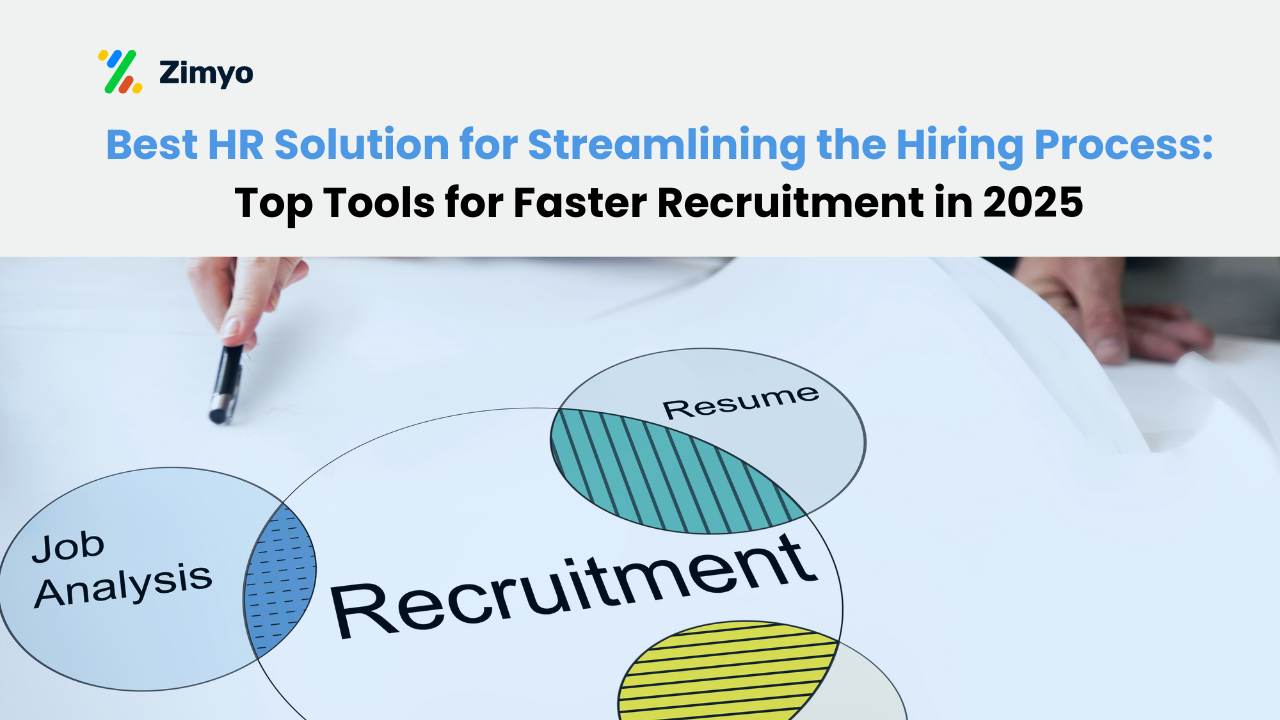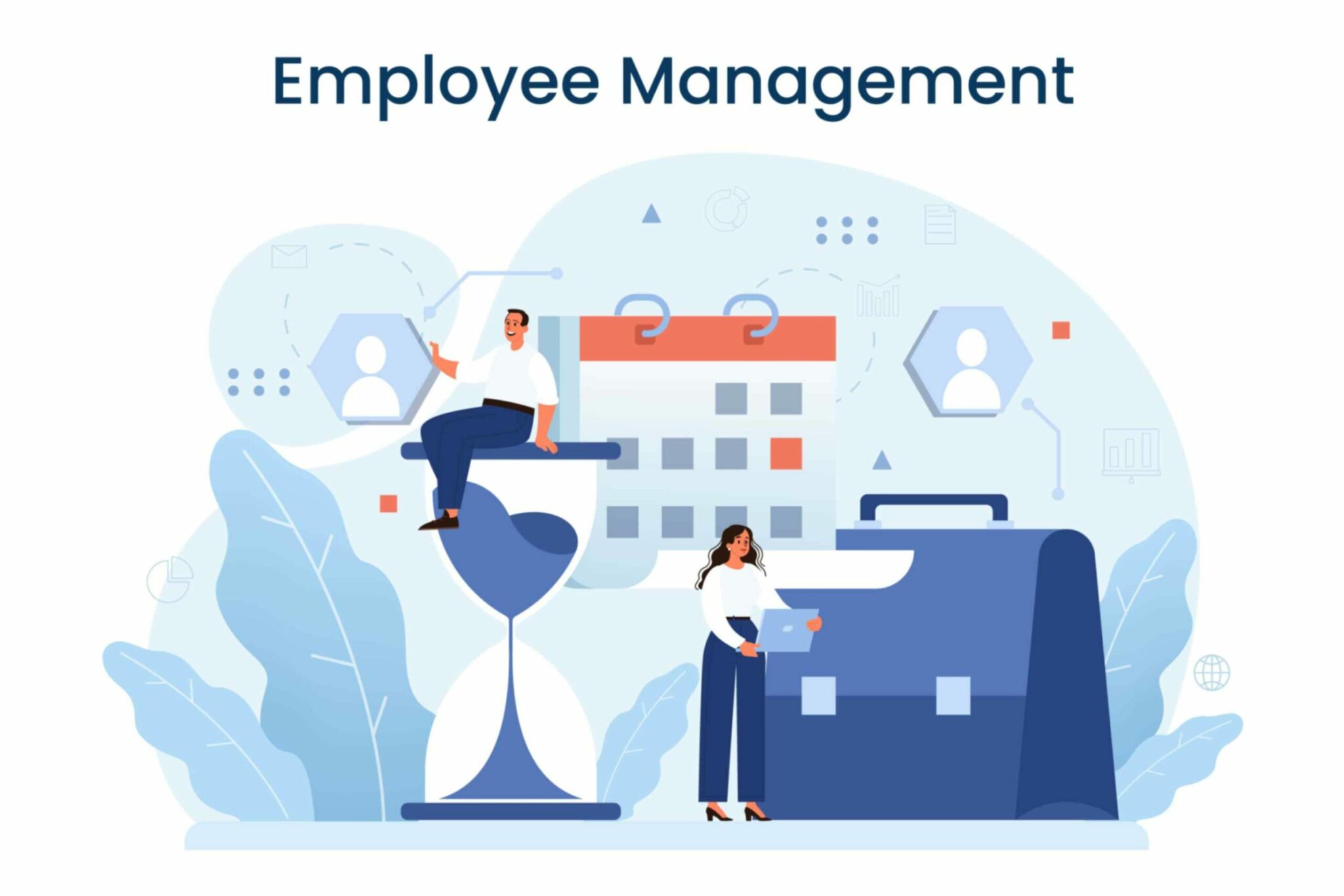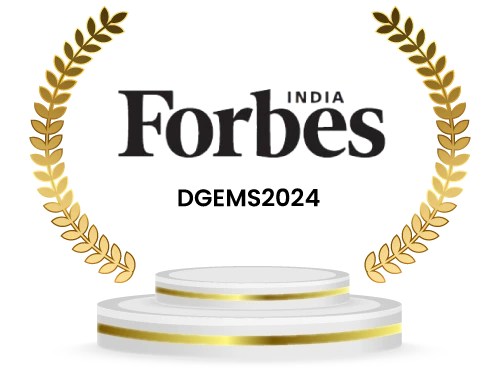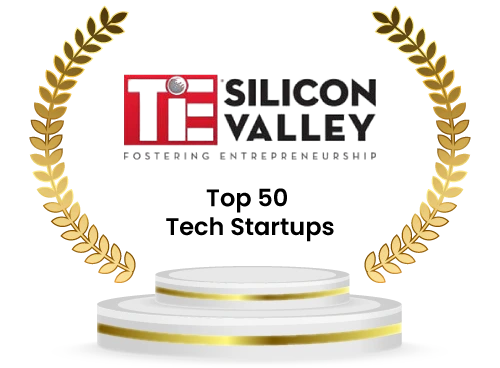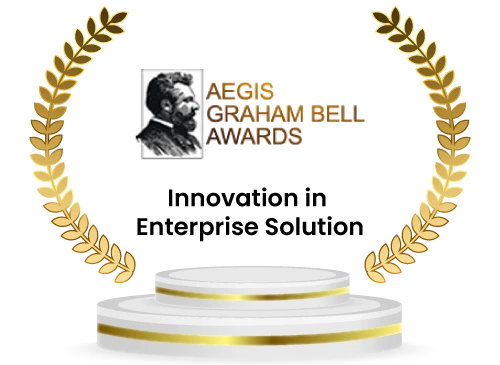In 2008, when the global financial crisis sent shockwaves across industries, leaders started to realize that the world they once knew had fundamentally changed. Predictability was gone, stability felt like a luxury, and “business as usual” was replaced by “business unusual.”
Take another scenario – its 2019 and your organization has a five-year strategic roadmap. Revenue projections look stable, the market is booming, and employee turnover is manageable. Then suddenly came the year 2020. A global pandemic sweeps across the world; offices shut down overnight, and the word “normal” loses its meaning.
Welcome to the BANI world, one where unpredictability isn’t the exception but the rule.
For decades, leaders used the VUCA framework (Volatility, Uncertainty, Complexity, Ambiguity) to make sense of chaos. It guided them through market disruptions, technological shifts, and geopolitical uncertainty. But the world evolved faster than VUCA could keep up with.
Today, the lens has shifted to BANI (Brittle, Anxious, Nonlinear, Incomprehensible), a model that captures the emotional, psychological, and structural fragility of our times.
This transition from VUCA to BANI marks not just a change in language, but a shift in leadership mindset going from strategic control to human-centered adaptability. It compels organizations to rethink change management, business models, and especially, HR leadership.
Definition of VUCA and BANI
Before diving into the nuances, it’s essential to understand what each framework stands for and why they matter.
The VUCA World: Leading Through Uncertainty
The term VUCA was coined by the U.S. Army War College in the late 1980s. It described the world after the Cold War, one marked by constant change and unpredictability.
Over time, businesses adopted the term to make sense of globalization, technological disruptions, and rapidly evolving market dynamics.
Let’s break it down:
- Volatility – Things change fast. A single event, like a new competitor entering the market or a sudden price surge, can cause ripple effects.
- Uncertainty – Future outcomes are unpredictable. For example, predicting consumer behavior during a recession or post-pandemic recovery.
- Complexity – Multiple interconnected factors influence outcomes. Think of how global supply chains depend on weather, politics, and logistics.
- Ambiguity – Sometimes, even with all the data, leaders can’t interpret what’s happening. For instance, when a new technology emerges but its long-term impact is unclear.
The VUCA world taught leaders to plan ahead, anticipate risk, and build systems that could bend without breaking. However, as digital transformation accelerated and crises became more frequent and emotional, that’s when VUCA started to feel incomplete.
The BANI World: Leading Through Fragility
In 2020, futurist Jamais Cascio introduced a new framework – BANI – to describe a world that had evolved beyond the VUCA mindset.
While VUCA focuses on external change, BANI centers on internal reactions like the fragility of systems, the anxiety of individuals, and the breakdown of predictability.
Here’s what it means:
- Brittle – Systems that look strong but collapse suddenly under pressure. Think of supply chains that crumbled during the COVID-19 pandemic or tech companies over-reliant on one revenue stream.
- Anxious – People and organizations constantly on edge, reacting to every crisis. Employees face burnout, leaders face decision paralysis.
- Nonlinear – The relationship between cause and effect has broken down. A small incident (like a viral post) can lead to massive consequences, while big efforts may yield little.
- Incomprehensible – Some events or systems are simply too complex to understand such as the inner workings of AI or global economic patterns.
The BANI world forces leaders to move from control to compassion, from process to adaptability, and from data-driven certainty to emotional intelligence.
52% of Fortune 500 companies have disappeared in the past two decades - a direct result of the VUCA-to-BANI shift where adaptability became the ultimate survival skill.
Learning the Difference Between VUCA and BANI
Understanding the Vuca vs Bani difference helps leaders shift their mindset.
In the VUCA world, businesses fought chaos with structure through forecasting, scenario planning, and strong governance.
In the BANI world, these tools alone no longer suffice. Emotional resilience, flexibility, and empathy now play a bigger role than rigid planning.
Factor | VUCA World | BANI World |
Focus | External challenges | Internal fragility |
Nature of Change | Predictable patterns of uncertainty | Unpredictable, nonlinear disruptions |
Leadership Approach | Strategic and analytical | Empathetic and adaptive |
Mindset | “Plan for uncertainty” | “Thrive amid chaos” |
Response Mechanism | Forecasting and resilience | Flexibility and human-centered leadership |
A Real-World Scenario
Case 1 (VUCA):
In 2016, a leading automobile manufacturer faced supply shortages due to political unrest. The company’s contingency plan kicked in, sourcing alternate vendors – a textbook VUCA response.
Case 2 (BANI):
In 2020, the same company faced global plant shutdowns, employee burnout, and a mental health crisis. The challenge wasn’t just logistical, instead, it was human.
They had to support remote teams, redefine communication, and rebuild morale.
This shift illustrates the move from managing uncertainty to managing human fragility.
Why the Shift from VUCA to BANI Is Important
The world has always been uncertain, but what makes today’s uncertainty different is its emotional and systemic fragility.
The VUCA model was designed to help leaders navigate unpredictability using logic, strategy, and analysis. It worked well when challenges were primarily external like market fluctuations or new competitors.
However, the BANI world reflects challenges that are not just external but deeply human and psychological. We are now dealing with burnout, digital fatigue, emotional overload, and fragile systems that break with a single disruption.
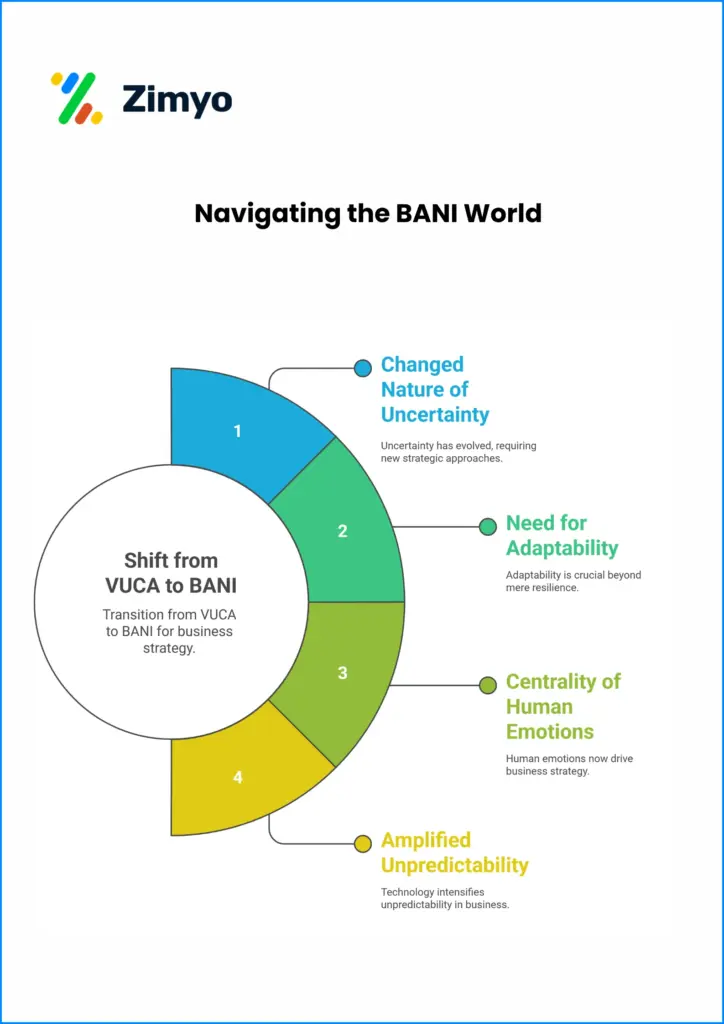
Let’s unpack why this shift matters.
1. Because the Nature of Uncertainty Has Changed
n the VUCA world, change was rapid but manageable. Organizations could prepare with contingency plans, forecasting models, and agile operations.
In the BANI world, however, change is chaotic and nonlinear. A single tweet can topple reputations. A micro-event like a coding glitch can cause a billion-dollar outage.
This new reality demands not just faster decisions, but emotionally intelligent ones.
Example: When Slack went down globally for just two hours, it disrupted millions of workflows. The technical issue was minor, but the human reaction – frustration, anxiety, lost time – was massive. That’s BANI in action.
2. Because Resilience Alone Isn’t Enough, We Need Adaptability
In a VUCA mindset, “resilience” was about bouncing back. In a BANI mindset, resilience evolves into adaptability – the ability to bend, pivot, and transform.
Organizations can no longer plan in rigid cycles. They need flexible business models that allow for experimentation, iteration, and rapid scaling.
Example: During the pandemic, brands like Nike and Starbucks pivoted their retail models to online-first experiences. Their quick adaptability ensured survival when physical spaces became irrelevant.
3. Because Human Emotions Are Now Central to Business Strategy
In the BANI world, anxiety is not a personal issue but a business factor. Employees overwhelmed by constant change can’t innovate or perform sustainably.
Leaders must create environments where psychological safety and mental health are embedded into performance culture.
Did you know? A Deloitte study found that organizations prioritizing employee well-being outperform competitors by 2.3x in productivity and 3x in innovation.
4. Because Technology Has Amplified Unpredictability
Ironically, while technology drives progress, it also accelerates fragility.
AI, automation, and data analytics have introduced both unprecedented speed and uncontrollable complexity.
This is why the shift from VUCA to BANI demands not just digital transformation but digital empathy.
Organizations must use technology to humanize processes, not depersonalize them.
In essence, the move from VUCA to BANI is a paradigm shift from logic to emotion, from control to connection, and from structure to fluidity.
It’s the realization that the world doesn’t just require stronger systems; it requires stronger people.
How Can Organizations Future-Proof Themselves Through the Synergy of HR and Technology?
In the BANI world, the most future-ready organizations are those that blend the best of human empathy with the precision of technology.
It’s no longer a question of “human vs. Machine”, it’s about “human with machine.”
1. Digitizing HR Without Dehumanizing It
The role of HR has shifted from administrative to strategic. Modern HR teams are adopting HRMS platforms, AI tools, and cloud-based systems to automate routine functions like payroll, attendance, and compliance.
But the real magic happens when this technology frees HR to focus on people, culture-building, engagement, and talent development.
Example: An HRMS like Zimyo automates repetitive processes, offering leaders real-time analytics on employee engagement and turnover. This helps HR leaders act faster — but with empathy.
2. Predictive People Analytics for Proactive Leadership
In the BANI world, data is the new intuition.
Advanced HR technology allows organizations to predict attrition, measure morale, and identify engagement dips before they escalate.
Imagine knowing that a team’s productivity is dropping because of rising burnout indicators and addressing it before people quit. That’s proactive HR leadership.
3. Building Agile Workforces for Nonlinear Challenges
Rigid hierarchies belong to the VUCA era. In a nonlinear world, flexibility wins.
Future-focused HR leaders are creating fluid team structures, where employees move across projects based on skills rather than titles.
Tech-enabled platforms allow for skill mapping, enabling leaders to deploy talent dynamically, just like agile tech companies do during product sprints.
4. Human-Centric Change Management
Traditional change management models focus on process; modern ones focus on emotion.
When implementing new technologies or restructuring business models, leaders must address the human side of change – fear, anxiety, and resistance.
Example: When Microsoft adopted its hybrid work model, HR leaders conducted empathy workshops, leadership coaching, and wellness initiatives to support teams emotionally, not just operationally.
5. Fostering Digital Well-Being and Connection
Hybrid work and automation can make employees feel disconnected. Using tools like AI-powered engagement platforms, pulse surveys, and virtual recognition systems, HR can ensure employees still feel seen, heard, and valued.
6. Embedding Purpose Into Technology
Technology should never just serve efficiency, it should serve meaning. When used right, tech enhances transparency, empowers communication, and reinforces trust, all essential pillars in the BANI world.
“In the next decade, the most successful companies will be those that integrate empathy into their algorithms.”
The future belongs to organizations where HR and technology work hand-in-hand, building systems that are both intelligent and kind.
A Deloitte study found that 83% of executives believe human adaptability is now more important than technical skills in the BANI world.
How HR Leaders Can Thrive in the BANI Era
In the BANI world, HR leaders are the new architects of organizational resilience. Their role goes beyond policy or compliance, they are culture shapers, change navigators, and emotional anchors.
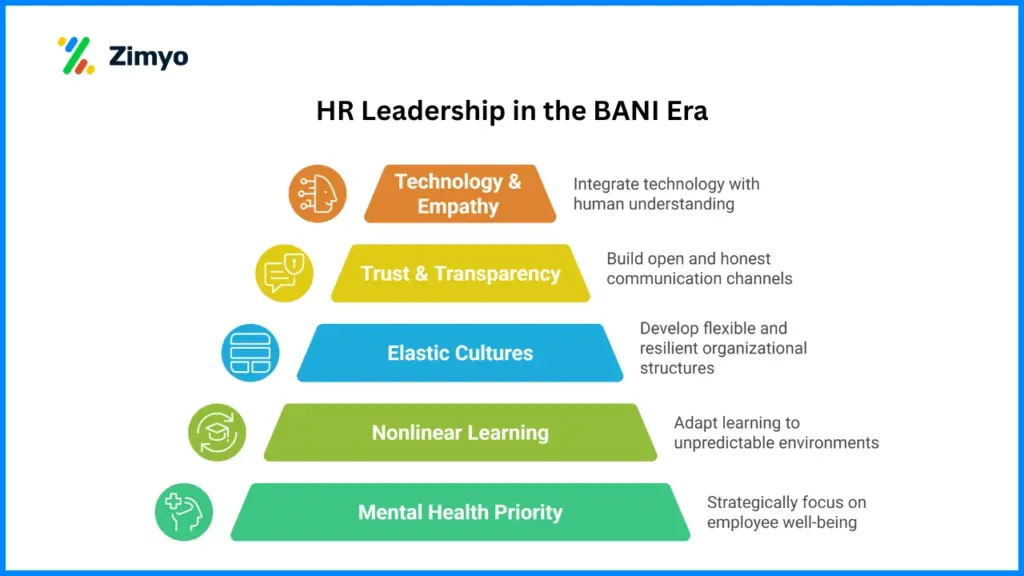
Here’s how HR leadership must evolve to thrive amid brittleness and anxiety:
1. Lead with Humanity and Vulnerability
The old model of leadership celebrated authority; the new one celebrates authenticity.
HR leaders must model vulnerability, admitting uncertainty, showing empathy, and leading with heart.
Example: During the pandemic, Airbnb’s CEO Brian Chesky personally addressed laid-off employees with empathy, offering job assistance and emotional support. The brand’s reputation for compassion strengthened, even amid crises.
2. Champion Mental Health as a Strategic Priority
Employee well-being isn’t a CSR initiative anymore, it’s a strategic advantage.
Leaders should embed wellness into performance culture through:
- Flexible working hours
- Access to counseling and mental health tools
- Wellness-driven KPIs for managers
Healthy employees are creative, loyal, and agile – qualities every BANI organization needs.
3. Redefine Learning for a Nonlinear World
In the BANI world, yesterday’s skills became obsolete quickly.
HR leaders must champion continuous learning ecosystems – microlearning platforms, mentorship networks, and AI-driven skill development paths.
Example: IBM’s “Your Learning” platform uses AI to curate personalized courses based on career goals, ensuring employees evolve as fast as the company does.
4. Cultivate Elastic Cultures
Rigid hierarchies crack under BANI pressure. HR should build elastic cultures, where adaptability, inclusion, and psychological safety thrive.
This means empowering employees to take ownership, innovate, and make decisions without bureaucratic bottlenecks.
5. Foster a Culture of Trust and Transparency
In an incomprehensible world, employees crave clarity. HR leaders should ensure that communication is consistent, transparent, and two-way, not top-down.
Regular feedback loops, open forums, and recognition programs create trust even when the future feels uncertain.
6. Blend Technology with Empathy
The best HR leaders use data to inform decisions but never let it replace human judgment.
Technology can predict disengagement, but it takes empathy to resolve it.
This synergy between tech and touch defines the future of HR leadership.
Real-World Example: Spotify’s “Work From Anywhere” Model
Spotify’s HR leadership embraced the BANI mindset by trusting employees to design their own work environment. The result?
Higher retention, stronger engagement, and a global reputation as a people-first employer.
Spotify’s move shows that thriving in the BANI world isn’t about control, it’s about confidence in people.
The Big Picture
In a BANI world, where change is constant and systems are fragile, HR leaders are the glue that holds organizations together.
Their success lies in balancing three forces:
- Technology for speed and scalability
- Empathy for connection and trust
- Adaptability for resilience and growth
The future of leadership isn’t just digital but deeply human.
How Zimyo Helps Organizations Thrive in the BANI Era
In a BANI world, where uncertainty is the only constant and agility defines survival, organizations can no longer rely on traditional structures or rigid systems. They need platforms that empower them to adapt quickly, stay resilient, and keep their people connected no matter what comes next. This is where Zimyo steps in.
Empowering Agility Through Technology
Zimyo’s all-in-one HRMS solution simplifies everything from onboarding to payroll, performance management, and engagement, helping organizations respond to change in real time. In an environment that’s brittle and nonlinear, Zimyo provides the clarity, consistency, and automation needed to maintain order amidst chaos.
Imagine this: a growing startup suddenly shifts to a hybrid model overnight. With Zimyo, HR leaders can track attendance, process payroll seamlessly, and keep employees connected, all within a few clicks. That’s not just efficiency; it’s resilience in action.
Building People-Centric Organizations
In a BANI-driven era, anxiety and uncertainty are part of the new normal. Zimyo helps HR leaders foster psychological safety, transparency, and engagement through its employee experience tools. Features like pulse surveys, feedback systems, and recognition modules empower employees to feel heard and valued—turning anxiety into alignment.
Because when employees feel supported, organizations become truly adaptable.
Data-Driven Decision Making
Zimyo equips leaders with real-time analytics to make smarter, faster decisions. Whether it’s forecasting workforce trends, identifying engagement dips, or managing performance, its data-driven insights help leaders move from reaction to anticipation, an essential shift for surviving the BANI world.
A Partner for the Future of Work
Zimyo isn’t just an HR software, it’s a strategic ally for future-ready businesses. By combining technology, empathy, and adaptability, it helps HR leaders turn unpredictability into opportunity.
Conclusion
From VUCA to BANI, the world of work has transformed from one of volatility to one of vulnerability and leaders must evolve with it.
While VUCA prepared organizations to respond to uncertainty, BANI demands that they respond with empathy. It’s no longer enough to build strong systems; we must build resilient people.
As businesses rewrite their change management and business models for the future, the partnership between HR leadership and technology will define success.
Because in a world that’s brittle, anxious, nonlinear, and incomprehensible, it’s not control that keeps companies ahead of the curve.
It’s connection.
FAQs
What are VUCA and BANI?
VUCA stands for Volatility, Uncertainty, Complexity, and Ambiguity, describing a fast-changing and unpredictable world.
BANI stands for Brittle, Anxious, Nonlinear, and Incomprehensible, reflecting today’s fragile, emotionally charged, and chaotic environment.
What is the difference between VUCA and BANI?
VUCA focuses on external challenges like change and uncertainty, while BANI emphasizes internal responses – fragility, anxiety, and the struggle to comprehend complexity in a digital-first world.
Has BANI replaced VUCA?
Not entirely. BANI builds upon VUCA by offering a more human-centered framework to understand today’s unpredictable and emotionally demanding business landscape.
What are the 4 elements of VUCA?
The four elements of VUCA are:
- Volatility – Speed and turbulence of change
- Uncertainty – Lack of predictability
- Complexity – Multiple interconnected factors
- Ambiguity – Situations with unclear meanings or outcomes

